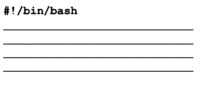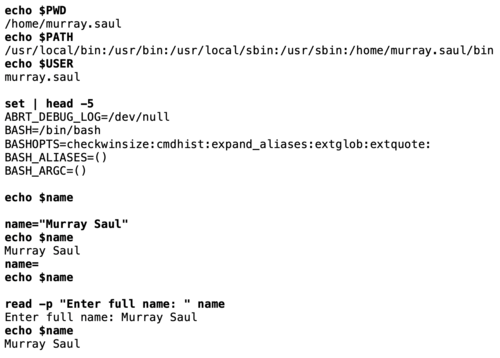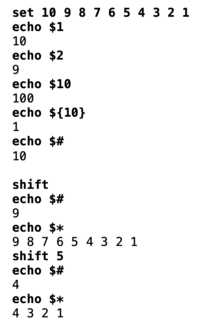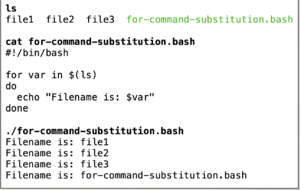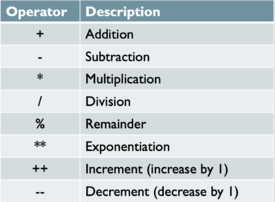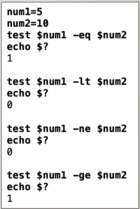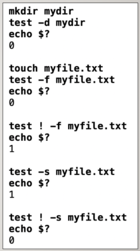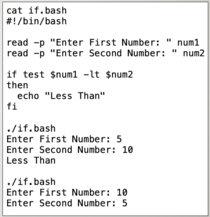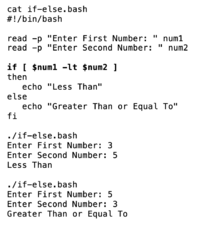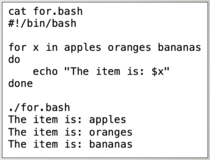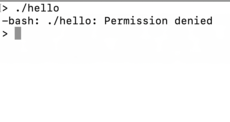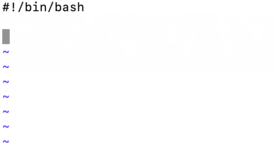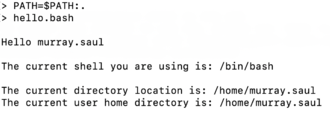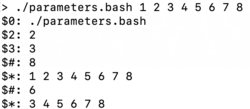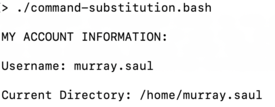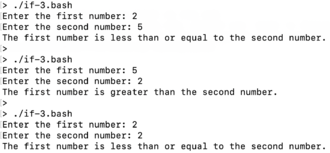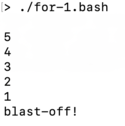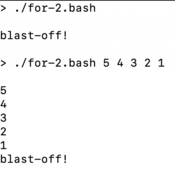Tutorial10: Shell Scripting - Part 1
Contents
INTRODUCTION TO SHELL SCRIPTING
Main Objectives of this Practice Tutorial
- Plan and create a Shell Script
- Explain the purpose of the she-bang line contained at the top of a shell script.
- Set permissions and execute shell scripts.
- Use environment and user-defined variables in shell scripts.
- Use Command Substitution and Math Operations in shell scripts
- Explain the purpose of the $? exit status and the test command.
- Use if and if-else logic statements in shell scripts.
- Use a for loop statement with a list in shell scripts.
Tutorial Reference Material
| Course Notes |
Linux Command/Shortcut Reference |
YouTube Videos | ||
| Course Notes:
|
Shell Scripting
Variables Commands / Techniques |
Control Flow Statements | Instructional Videos: | |
KEY CONCEPTS
A shell script is a file that contains Unix/Linux commands and reserved words to help automatic common tasks.
Creating & Executing Shell Scripts
It is recommended to plan out on a piece of paper the purpose of the shell script.
Once you have planned your shell script by listing the sequence of steps (commands),
you need to create a file (using a text editor) that will contain your Linux commands.
NOTE: Avoid using filenames of already existing Linux Commands to avoid confusion.
It is recommended to include a file extension that describes the type of shell for the shell script.
Using a Shebang Line
Since Linux shells have evolved over a period of time, using a she-bang line forces the shell scriptto run in a specific shell, which could prevent errors in case an older shell does not recognize
newer features from more recent shells.
The she-bang line is a special comment at top of your shell script to run your shell script
in a specific shell.
NOTE: The shebang line must appear on the first line and at the beginning of the shell script,
otherwise, it will be treated as a regular comment and ignored.
Setting Permissions / Running Shell Scripts
To run your shell script by name, you need to assign execute permissions for the user.
To run the shell script, you can execute the shell script using a relative, absolute, or relative-to-home pathname
Examples:
chmod u+x myscript.bash
./myscript.bash
/home/username/myscript.bash
~/myscript.bash
Variables / Parameters
Environment Variables
Shell environment variables shape the working environment whenever you are logged in Common shell. Some of these variables are displayed via Linux commands in the diagram displayed on the right-side.You can issue the pipeline command set | more
to view all variables.
Placing a dollar sign "$" prior to the variable name will cause the variable to expand to the value contained in the variable.
User Defined Variables
User-defined variables are variables that can be used in the shell script for customized purposes.
Data can be stored and removed within a variable using an equal sign (no spaces on either side of equal sign).
The read command can be used to prompt the user to enter data into a variable. The readonly command will prevent
the current value of the variable for the remainder of the execution of a shell script.
Positional Parameters and Special Parameters
A positional parameter is a variable within a shell program; its value is set from arguments contained in a shell script or using the set command.Positional parameters are numbered and their values are accessed by using
a preceding "$" (eg. $1, $2, $3, etc.). The positional parameter $0 refers to
either the name of shell where command was issued, or filename of shell script being executed.
If using positional parameters greater than 9, then you need to include number within braces.
Examples: echo ${10}, ls ${23}
The shift command can be used with positional parameters to shift positional parameters
to the left by one or more positions.
There are a couple of ways to assign values as positional parameters:
- Use the set command with the values as argument after the set command
- Run a shell script containing arguments
There are a group of special parameters that can be used for shell scripting.
A few of these special parameters and their purpose are displayed below:
$* , “$*” , "$@" , $# , $?
Command Substitution / Math Operations
Command Substitution:
Command substitution is a facility that allows a command
to be run and its output to be pasted back on the command line as arguments to another command. Reference: https://en.wikipedia.org/wiki/Command_substitution
Usage:
command1 $(command2)
or
command1 `command2`
Examples:
file $(ls)
mail -s "message" $(cat email-list.txt) < message.txt
echo "The current directory is $(pwd)"
echo "The current hostname is $(hostname)"
echo "The date is: $(date +'%A %B %d, %Y')"
Math Operations:
In order to make math operations work, we need to convert numbers
stored as text into binary numbers.
We can do this by using 2 pairs of round brackets (( )).
Examples:
num1=5;num2=10 echo “$(($num1 + $num2))” 15 echo “$((num1-num2))” -5 ((product=num1*num2)) echo “$product” 50
Control Flow Statements
more flexible and can adapt to changing situations.
In order to use control flow statements, you need to test a condition to get
TRUE (zero value) or FALSE (non zero value). This can be done two ways:
- Run a command to get the exit status ($?)
- Use the test command
Refer to the diagrams on the right to see how to use the test command.
You CANNOT use the < or > symbols when using the test command since these are redirection symbols. Instead, you need to use options when performing numerical comparisons.
Refer to the diagrams to the right test options and their purposes.
Logic Statements
A logic statement is used to determine which Linux commands
are executed basedon the result of a condition:
TRUE (zero value) or FALSE (non-zero value).
There are several logic statements, but we will just concentrate on the if statement.
if test condition
then
command(s)
fi
Refer to the diagram to the right for using the if logic statement with the test command.
if-else statement:
Unlike using an if statement, an if-else statement take two different sets of actions
based on the results of the test condition.
Example:
if test condition
then
command(s)
else
command(s)
fi
Loop Statements
A loop statement is a series of steps or sequence of statements executed repeatedly
zero or more times satisfying the given condition is satisfied.
Reference: https://www.chegg.com/homework-help/definitions/loop-statement-3
There are several loops, but we will look at the for loop using a list.
for item in list
do
command(s)
done
Refer to the diagram above and to the extreme right side for an example using the for loop with a list.
INVESTIGATION 1: CREATING A SHELL SCRIPT
In this section, you will learn how to create and run a Bash Shell script.
Perform the Following Steps:
- Login to your matrix account.
- Issue a command to confirm you are located in your home directory.
We want to create a Bash Shell script to welcome the user by their username.
Let's first look at selecting an appropriate filename for your shell script. - Issue the following linux command to check if the filename called hello
already exists as a command:
which hello
The output from this command should indicate that the shell did NOT
find any directories that contained this filename that could represent
a command; therefore, this shell script name CAN be used. - Use a text editor like vi or nano to create the text file called hello
- Enter the following two lines in your shell script:
echo
echo "Hello $USER"
echo
NOTE: The variable called USER is an environment variable that contains the current user's login name. If you wanted to share your shell script with other users, when they run the shell script, they will greeted by their username. Environment variables make your shell script adaptable by ALL users. - Save your editing session and exit the text editor.
Instead of issuing the bash command followed by your shell script pathname as an argument,
let's simply run it by its filename. This is the most common method of running shell scripts. - Issue the following linux command to run your shell script in your current directory:
./hello
You should notice an ERROR message indicating you don't have permissions to run the file. To fix this, you need to
add execute permissions prior to running the shell script. - Issue the following linux command to add
execute permissions for your shell script:
chmod u+x hello - Issue the following to run your shell script:
./hello
Did your shell script run?
ATTENTION: Students might get FRUSTRATED when performing their assignment 3 when their Bash shell scripts have errors.
One major cause is the the OUTPUT of their Bash shell script when run does not EXACTLY match the required output
for the correct Bash shell script.
This requires that you CAREFULLY read the requirements of your Bash shell script and create it to the EXACT specifications - Issue the following Linux command to run a checking script:
bash /home/murray.saul/myscripts/week10-check-1 - If you encounter errors, make corrections and re-run the checking script until you
receive a congratulations message, then you can proceed.
- In the next investigation, you will learn to create and run shell scripts that
use variables, positional and special parameters. You will also learn how to
add a she-bang line at the top of a shell script to force it to run in a specified shell.
Proceed to the next investigation.
- In the next investigation, you will learn to create and run shell scripts that
INVESTIGATION 2: SHE-BANG LINE / VARIABLES / PARAMETERS
In this section, you will add a she-bang line at the top of your shell script to force the shell script to run in a
specified shell when executed. You will also learn how to use variables, positional and special parameters
to make your shell scripts more adaptable.
Perform the Following Steps:
- Confirm that you are located in your home directory in your Matrix account.
Let's run shell scripts with and without a she-bang line at the top of your shell script
to demonstrate why using a she-bang line should be included in a shell script to force
the shell script to be run in a specific shell. - Use a text editor to edit the hello shell script that you created in the previous investigation.
- Add the following line to the bottom of the file (copy and paste to prevent errors):
echo "The current shell you are using is: $(ps -o cmd= -p $$|cut -d' ' -f1)"
FYI: This command displays the name of the shell that the shell script is running in.
The command within $( ) uses a technique known as command substitution. - Issue the following Linux command to change to the Bourne Shell:
sh
You should notice your shell prompt changed which indicates
that you are in a different shell. - Issue the following Linux command to run your shell script in the Bourne Shell:
./hello
You should see that you are currently running the shell script "sh"
which represents the Bourne shell.
NOTE: Due to the fact that shells (and their features) have evolved over a period of time,
an error may occur if you include a NEWER shell feature (e.g. Bash Shell) but run it in an OLDER shell (For example: the Bourne Shell).You can add a special comment called a she-bang line at the BEGINNING of the FIRST line of your shell script to force it to run in the shell you want (for example: the Bash shell).
- Edit your hello shell script using a text editor.
- Insert the following line at the beginning of the first line of your hello file:
#!/bin/bash
This is referred to as a she-bang line. It forces this script to be run in the Bash Shell.
When your Bash Shell script finishes execution, you are returned to your current shell that you are using (which in our case in Matrix, is still the Bash shell). - Save your editing changes and exit your text editor.
- While in the Bourne shell, issue the following Linux command:
./hello
You should notice that the shell name is running in the Bash shell.
- It is a good idea to rename your shell script to include an extension to
explain that this is Bash Shell script file (referred to as a "portable Bash shell script").
Issue the following Linux command to rename your shell script file:
mv hello hello.bash - Confirm that the modification work by running your Bash shell script:
./hello.bash - Enter the following Linux command to exit the Bourne shell and return to your Bash shell:
exit
Let's use some ENVIRONMENT variables in our Bash Shell script. - Use a text editor to edit the shell script called hello.bash
- Add the following lines to the bottom of the hello.bash file:
echo
echo "The current directory location is: $PWD"
echo "The current user home directory is: $HOME"
echo - Save your editing changes and exit your text editor.
- To confirm that you properly renamed your shell script,
run the following shell script:
./hello.bash
Take time to view the output and the values of the environment variables. - Issue the following Linux command to add your current directory to the PATH environment variable:
PATH=$PATH:. - Issue the following Linux command to confirm that the current directory "." has been added to the PATH environment variable:
echo $PATH - Issue the following to run your Bash shell script just by name:
hello.bash
Did your Bash shell script run? - Exit your Matrix session, and log back into your Matrix session.
- Re-run the hello.bash shell script by just using the name.
What did you notice?
The setting of the PATH environment variable only worked in the current session only.
If you exit the current Matrix session, then the recently changed settings for environment variables will be lost.
You will in a future tutorial how to set environment variables in start-up files.
ATTENTION: Students will get FRUSTRATED when performing their assignment 3 when their Bash shell scripts have errors. One major cause is that the OUTPUT of your Bash shell script does NOT match the required output of the assignment checking program. This requires that you CAREFULLY read the requirements of your Bash shell script to match the EXACT specifications. - Issue the following Linux command to run a checking script:
bash /home/murray.saul/myscripts/week10-check-2 | more
If you encounter errors, make corrections and re-run the checking script until you
receive a congratulations message, then you can proceed.
Let's create a Bash shell script that contain user-created variables. - Use a text editor to create a Bash shell script called user-variables.bash
- Add the following lines to the beginning of the user-variables.bash file:
#!/bin/bash
read -p "Enter your Full Name: " name
read -p "Enter your age (in years): " age
echo "Hello $name - You are $age years old" - Save your editing changes and exit your text editor.
- Issue the chmod command to add execute permissions for the user for the user-variables.bash file.
- Issue the following to run the user-variables.bash Bash shell script
(enter your Full name and age when prompted):
./user-variables.bash
What did you notice? - Use a text editor to modify your Bash shell script called user-variables.bash
- Insert the following lines immediately below the she-bang line:
age=25
readonly age - Save your editing changes and exit your text editor.
- Issue the following to run the user-variables.bash Bash shell script:
./user-variables.bash
What do you notice when you try to change the age variable? Why?
Let's use positional parameters and special parameters in a Bash shell script. - Use a text editor to create a file called parameters.bash
- Add the following lines to the beginning of this file:
#!/bin/bash
echo \$0: $0
echo \$2: $2
echo \$3: $3
echo \$#: $#
echo \$*: $*
shift 2
echo \$#: $#
echo \$*: $* - Save your editing changes and exit your text editor.
Notice how the quoting character "\" is used to display positional parameters like "$2"
as opposed to the value stored in the second positional parameter. - Issue the chmod command to add execute permissions for the user for the parameters.bash file.
- Issue the following to run the user-variables.bash Bash shell script:
./parameters.bash
What happened?
The values for some of the positional parameters and special parameters may NOT be
displayed properly since you did NOT provide any arguments when running your Bash shell script. - Issue the following to run the user-variables.bash Bash shell script with arguments:
./parameters.bash 1 2 3 4 5 6 7 8
What do you notice?
Take some time to view the results and how the parameters have changed when using the shift command.
- In the next investigation, you will learn to use command substitution and math operations in your shell scripts.
INVESTIGATION 3: COMMAND SUBSTITUTION / MATH OPERATIONS
In this section, you will learn how to use command substitution and math operations in your shell scripts.
Command Substitution
Command Substitution is a method of running a Linux command that provides stdout
that is used as argument(s) for another Linux command.
For example:
echo "The current date and time is: $(date)"
Let's create a Bash shell script that uses command substitution that displays
text and values of environment variables in a series of echo statements.
Perform the Following Steps:
- Confirm that you are located in your home directory in your Matrix account.
- Use a text editor to create a Bash shell script called command-substitution.bash
- Add the following lines to the beginning of this file:
#!/bin/bash
echo
echo "MY ACCOUNT INFORMATION:"
echo
echo "Username: $(whoami)"
echo
echo "Current Directory: $(pwd)"
echo - Save your editing changes and exit your text editor.
- Issue the chmod command to add execute permissions
for the command-substitution.bash file. - Issue the following to run the user-variables.bash Bash shell script:
./command-substitution.bash
Confirm that your shell script displays the correct information for your Matrix account.
Math Operations
Since you do NOT have to declare the data-type of a variable (as opposed to compiled program such as the C-programming language),
numbers would be stored as text in variables. Therefore, it is important to use the construct (( )) to convert numbers (stored as text) into numbers.
We will now learn how to use this construct in order to perform math operations for shell scripts.
Perform the Following Steps:
- Confirm that you are located in your home directory in your Matrix account.
- To demonstrate the need for the ( ) construct, issue the following Linux command from the shell:
echo "1 + 2"
What did you notice? - Issue the following Linux commands (using the math construct):
echo "$((1 + 2))"
What did you notice?
The (( )) construct converted values 1 and 2 from text to binary numbers.
The $ in front of the construct expands the result of the calculation. - Issue the following Linux commands demonstrating other types of math calculations:
echo "$((2 - 3))"
echo "$((2 * 3))"
echo "$((2 / 3))"
echo "$((2 ** 3))"
NOTE: You may notice that dividing 2 by 3 shows a zero result. To perform decimal calculations would require
the use the awk or bc Linux commands (we will NOT cover that method to work with decimal numbers in this course).
You can use the math construct with variables as well. - Issue the following Linux commands demonstrating using the math construct with variables:
num1=34
num2=12
echo "$((num1 * num2))"
What did you notice?
You can create variables and assign them values in the math construct as well. - Issue the following Linux commands demonstrating using the math construct with variables:
num1=5
num2=3
((result = num1 ** num2))
echo "The result is: $result" - Use a text editor to create a Bash shell script called dog-years.bash
- Add the following lines to the beginning of this file:
#!/bin/bash
echo
dogFactor=7
read -p "Please enter your age (in years): " humanYears
((dogYears = humanYears * dogFactor))
echo "You age in dog-years is: $dogYears"
echo - Save your editing changes and exit your text editor.
- Issue the chmod command to add execute permissions
for the user for the dog-years.bash file. - Issue the following to run the user-variables.bash Bash shell script:
./dog-years.bash
Enter your age to see what happens. - Issue the following to run a checking script:
bash /home/murray.saul/myscripts/week10-check-3 | more
If you encounter errors, make corrections and re-run the checking script until you
receive a congratulations message, then you can proceed.
- In the next investigation, you will use control-flow statements to allow your shell scripts to perform differently under different situations.
INVESTIGATION 4: CONTROL FLOW STATEMENTS
In this section, you will learn how to use control-flow statements
to make your shell script behave differently under different situations or conditions.
Perform the Following Steps:
- You can test conditions by issuing Linux commands / pipeline commands and by using the test command.
- Confirm that you are located in your home directory in your Matrix account.
- Issue the following Linux commands at the Bash shell prompt to assign values to several variables:
course="ULI101"
number1=5
number2=10 - Issue the following Linux command to test a condition:
test $course = "ULI101"
The $? variable is used to store an exit status of the previously-issued command (including the test command).
If the exit status is zero, then it indicates a TRUE value and if the status is non-zero, then it indicates a FALSE value. - Issue the following Linux command to view the status of the previously-issued test command:
echo $?
Based on the exit status value, is the result TRUE or FALSE? - Issue the following Linux command to test another condition:
test $course = "uli101" - Issue the following Linux command to view the status of the previously-issued test command:
echo $?
Based on the exit status value, is the result TRUE or FALSE?
The value is non-zero (FALSE) since UPPERCASE characters
are different than lowercase characters. - Issue the following Linux command to test another condition:
test $course != "uli101" - Issue a linux command to display the value of $?
What is the result? Why? - Issue the following Linux command to test a condition involving earlier assigned variables:
test $number1 > $number2 - Issue a Linux command to display the value of $?
NOTE: You will notice that something is wrong.
The exit status $? shows a zero (TRUE) value, but the number 5 is definitely NOT greater than 10.
The problem is that the symbols < and > are interpreted as REDIRECTION symbols! - To prove this, issue the following Linux command :
ls -l 10
You should notice a file called "10". The incorrectly issued test command used redirect to create an empty file instead,
which indeed succeeded just giving a TRUE value!
To prevent problems when issuing the test command when comparing numbers, you can use the following options:
-lt (<), -le (<=), -gt (>), -ge (>=;), -eq (=), -ne (!=) - Issue the correct Linux command to properly test both values:
test $number1 -gt $number2 - Issue a Linux command to display the value of $?.
You should notice that the exit status value is now FALSE which is the correct result. - The test command can be abbreviated by the square brackets [ ] which contains the test condition
within the square brackets. You need to have spaces between the brackets and the test condition;
otherwise, you will get a test error. - To generate a test error, copy and paste the following test command:
[$number1 -gt $number2]
The reason for the error was that you need spaces between the square brackets and the test condition. - Copy and paste the following (correct) test command:
[ $number1 -gt $number2 ] - Issue a command to view the value of the exit status of the previously issued test command.
You should notice that is works properly.
Now that we have learned how to test conditions, let's learn about control-flow statements.
Logic statements are used to create different paths or directions that the shell script will take
based on the result of the test condition. In this tutorial,
we will only focus on the if and if-else logic statement. - Use a text editor like vi or nano to create the text file called if-1.bash (eg. vi if-1.bash)
- Enter the following lines in your shell script:
#!/bin/bash
num1=5
num2=10
if [ $num1 -lt $num2 ]
then
echo "num1 is less than num2"
fi - Save your editing session and exit the text editor (eg. with vi: press ESC, then type :wx followed by ENTER).
- Issue the following Linux command to add execute permissions for your shell script:
chmod u+x if-1.bash - Run your shell script by issuing: ./if-1.bash
Confirm that the output indicated a correct result. - Use a text editor like vi or nano to create the text file called if-2.bash (eg. vi if-2.bash)
If you are using the nano text editor, refer to notes on text editing in a previous week in the course schedule. - Enter the following lines in your shell script:
#!/bin/bash
read -p "Enter the first number: " num1
read -p "Enter the second number: " num2
if [ $num1 -gt $num2 ]
then
echo "The first number is greater than the second number."
fi - Save your editing session and exit the text editor (eg. with vi: press ESC, then type :wx followed by ENTER).
- Issue the following Linux command to add execute permissions for your shell script:
chmod u+x if-2.bash - Run your shell script by issuing: ./if-2.bash
Confirm that the output indicated a correct result.
What happens when you enter a first number that is less than or equal to the second number? Let's use an if-else statement to provide an appropriate alternative
if the condition is FALSE. - Use a text editor like vi or nano to create the text file called if-3.bash (eg. vi if-3.bash)
- Enter the following lines in your shell script:
#!/bin/bash
read -p "Enter the first number: " num1
read -p "Enter the second number: " num2
if [ $num1 -gt $num2 ]
then
echo "The first number is greater than the second number."
else
echo "The first number is less than or equal to the second number."
fi - Save your editing session and exit the text editor (eg. with vi: press ESC, then type :wx followed by ENTER).
- Issue the following Linux command to add execute permissions for your shell script:
chmod u+x if-3.bash - Run your shell script by issuing: ./if-3.bash
What do you notice? Try running the script several times with numbers different and equal to each other to confirm that the shell script works correctly.
Let's learn how to use a loop with shell scripting. In this tutorial, we will only focus on one simple use with the for loop. - Use a text editor like vi or nano to create the text file called for-1.bash (eg. vi for-1.bash)
- Enter the following lines in your shell script:
#!/bin/bash
echo
for x in 5 4 3 2 1
do
echo $x
done
echo "blast-off!"
echo - Save your editing session and exit the text editor (eg. with vi: press ESC, then type :wx followed by ENTER).
- Issue the following Linux command to add execute permissions for your shell script:
chmod u+x for-1.bash - Run your shell script by issuing: ./for-1.bash
- Use a text editor like vi or nano to create the text file called for-2.bash (eg. vi for-2.bash)
- Enter the following lines in your shell script:
#!/bin/bash
echo
for x
do
echo $x
done
echo "blast-off!"
echo - Save your editing session and exit the text editor (eg. with vi: press ESC, then type :wx followed by ENTER).
- Issue the following Linux command to add execute permissions for your shell script:
chmod u+x for-2.bash - Run your shell script by issuing: ./for-2.bash 10 9 8 7 6 5 4 3 2 1
How does this differ from the previous shell script?
You will learn in a couple of weeks more examples of using loop statements.
Let's run a checking-script to confirm that both your for-1.bash and for-2.bash
Bash shell scripts exist, have execute permissions, and when run, produce
the same OUTPUT as required in this tutorial's instructions. - Issue the following Linux command to run a checking script:
bash /home/murray.saul/myscripts/week10-check-4 | more
If you encounter errors, make corrections and re-run the checking script until you
receive a congratulations message, then you can proceed. - After you complete the Review Questions sections to get additional practice, then work on your online assignment 3,
sections 2 and 3 labelled Interactive Shell Environment and Introduction To Scripting (phone).
LINUX PRACTICE QUESTIONS
The purpose of this section is to obtain extra practice to help with quizzes, your midterm, and your final exam.
Here is a link to the MS Word Document of ALL of the questions displayed below but with extra room to answer on the document to simulate a quiz:
https://ict.senecacollege.ca/~murray.saul/uli101/uli101_week10_practice.docx
Your instructor may take-up these questions during class. It is up to the student to attend classes in order to obtain the answers to the following questions. Your instructor will NOT provide these answers in any other form (eg. e-mail, etc).
Review Questions:
PART A: WRITE BASH SHELL SCRIPT CODE
Write the answer to each question below the question in the space provided.
- Write a Bash shell script that clears the screen and displays the text Hello World on the screen.
What permissions are required to run this Bash shell script?
What are the different ways that you can run this Bash shell script from the command line? - Write a Bash shell script that clears the screen, prompts the user for their full name and then prompts the user for their age,
then clears the screen again and welcomes the user by their name and tells them their age.
What comments would you add to the above script’s contents to properly document this Bash shell script to be understood
for those users that would read / edit this Bash shell script’s contents? - Write a Bash shell script that will first set the value of a variable called number to 23 and make this variable read-only.
Then the script will clear the screen and prompt the user to enter a value for that variable called number to another value.
Have the script display the value of the variable called number to prove that it is a read-only variable.
When you ran this Bash shell script, did you encounter an error message?
How would you run this Bash shell script, so the error message was NOT displayed? - Write a Bash shell script that will clear the screen and then display all arguments that were entered after your Bash shell script when it was run. Also have the Bash shell script display the number of arguments that were entered after your Bash shell script.
PART B: WALK-THRUS
Write the expected output from running each of the following Bash shell scripts You can assume that these Bash shell script files have execute permissions. Show your work.
- Walkthru #1:
- cat walkthru1.bash
#!/usr/bin/bash word1=”counter” word2=”clockwise” echo “The combined word is: $word2$word1”
- WRITE OUTPUT FROM ISSUING:
- ./walkthru1.bash
- Walkthru #2:
- cat walkthru2.bash
#!/usr/bin/bash echo “result1: $1” echo “result2: $2” echo “result3: $3” echo “result 4:” echo “$*”
- WRITE OUTPUT FROM ISSUING:
- ./walkthru2.bash apple orange banana
